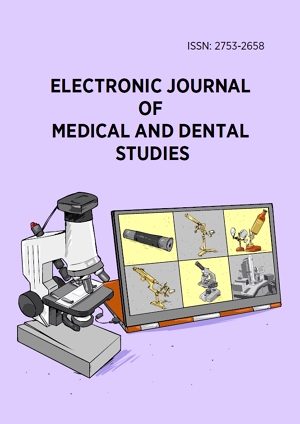Electronic Journal of General Medicine
Electronic Journal of General Medicine (Abbrev. Electron J Gen Med) is an English multidisciplinary peer-reviewed medical journal publishing articles in the fields of general medicine with ISSN 2516-3507. EJGM is published bimonthly and is an open access journal.
Current Issue
Volume 22, Issue 3, June 2025
(In Progress)
Original Article
Examining the relationship between obesogenic environment, eating behaviors and food consumption in adults: A community-based study from Türkiye
ELECTRON J GEN MED, Volume 22, Issue 3, June 2025, Article No: em642
https://doi.org/10.29333/ejgm/16183Original Article
The impact of health-caregivers emotional nurturance on cognitive development in preschoolers: A nationwide public health cross-sectional study
ELECTRON J GEN MED, Volume 22, Issue 3, June 2025, Article No: em643
https://doi.org/10.29333/ejgm/16184Original Article
Effect of adding pranayama yoga exercises to laser acupuncture on inflammatory markers in elderly with allergic rhinitis: A randomized controlled study
ELECTRON J GEN MED, Volume 22, Issue 3, June 2025, Article No: em644
https://doi.org/10.29333/ejgm/16224Review Article
Decoding the efficacy and safety profiles of anti-hypertensive agents by targeting RAAS: A systematic review and meta-analysis of clinical trials
ELECTRON J GEN MED, Volume 22, Issue 3, June 2025, Article No: em645
https://doi.org/10.29333/ejgm/16227Original Article
Respiratory muscle weakness, reduced exercise capacity, and impaired lung functions in long-term post-COVID-19 patients
ELECTRON J GEN MED, Volume 22, Issue 3, June 2025, Article No: em646
https://doi.org/10.29333/ejgm/16228



